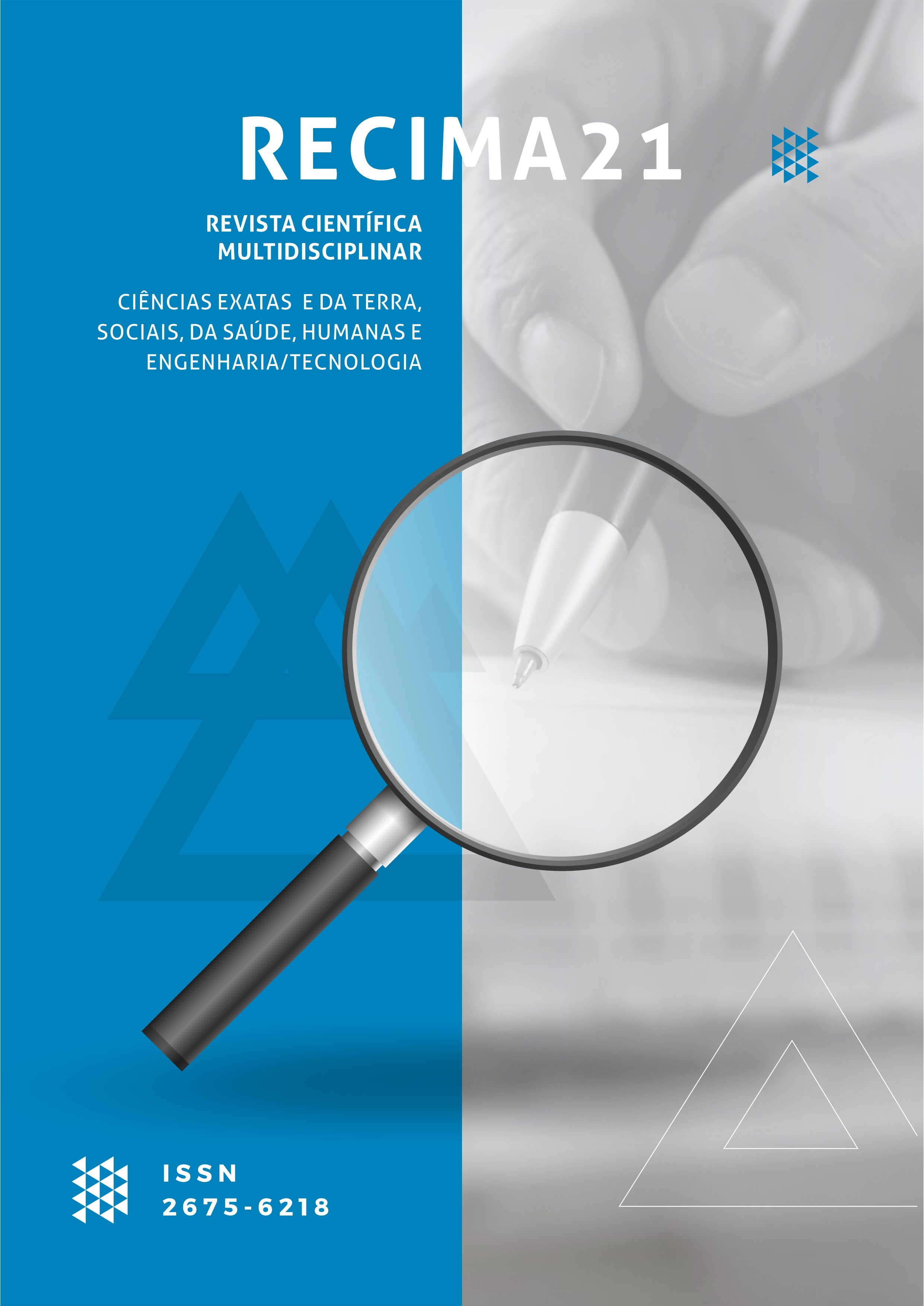EDUCATIONAL TECHNOLOGIES ON FAMILY PLANNING FOR ADOLESCENTS: SCOPE REVIEW PROTOCOL
DOI:
https://doi.org/10.47820/recima21.v3i10.2052Keywords:
Adolescent. Educational Technology. Family planning.Abstract
Objective: This study aims to develop a scoping review protocol, which aims to map which are the most used technologies that address family planning, in order to guide adolescents regarding contraceptive methods. Review Method: The research methodology will be based on evidence-based practice (EBP) studies and the principles of the scope review protocol through its construction phases, according to the guidance of the Joanna Briggs Institute (JBI) Manual, being eligible for articles that are complete and freely available in the databases Lilacs via VHL, PUBMED, SciELO, SCOPUS and Grey Literature source - Google Scholar. Presentation and Interpretation of Results: The results will be presented with the structural basis of analysis as proposed by Bardin, by means of tables, flows, graphs, percentage and comparative analyses. A critical discussion based on the findings will deliver a comprehensive qualitative review study, able to find educational technologies used in family planning for adolescents in different socioeconomic realities in the world.
Downloads
References
ARAÚJO, W. C. O. Recuperação da informação em saúde: construção, modelos e estratégias. [s.l: s.n.]. v. 3
BARDIN, L. Análise de conteúdo (LA Reto & A. Pinheiro, Tradução)(6a Edição). Lisboa, Portugal: Edições, v. 70, 2015.
CAHILL, N. et al. Modern contraceptive use, unmet need, and demand satisfied among women of reproductive age who are married or in a union in the focus countries of the Family Planning 2020 initiative: a systematic analysis using the Family Planning Estimation Tool. Lancet, v. 391, n. 10123, p. 870–882, 2018.
COLQUHOUN, H. L. et al. Scoping reviews: Time for clarity in definition, methods, and reporting. Journal of Clinical Epidemiology, v. 67, n. 12, p. 1291–1294, 2014.
DARROCH, J. E. et al. Adding it up: costs and benefits of meeting the contraceptive needs of adolescents. 2016.
GLOBAL, F. P. 2018 EDITION What ’ s New in This Edition ? [s.l: s.n.].
ORGANIZATION, W. H. World Health Statistics 2018: Monitoring Health for the SDGs, Sustainable Development Goals. [s.l.] World Health Organization, 2018.
OUZZANI, M. et al. Rayyan-a web and mobile app for systematic reviews. Systematic Reviews, v. 5, n. 1, p. 1–10, 2016.
PATTON, G. C. et al. Our future: a Lancet commission on adolescent health and wellbeing. The Lancet, v. 387, n. 10036, p. 2423–2478, 11 jun. 2016.
PETERS, M. D. J. et al. Updated methodological guidance for the conduct of scoping reviews. JBI evidence synthesis, v. 18, n. 10, p. 2119–2126, 2020.
SALMOND, S.; BENNETT, M. J. Systematic review of qualitative evidence. [s.l: s.n.].
SANZ-MARTOS, S. et al. Effectiveness of educational interventions for the prevention of pregnancy in adolescents. Atencion Primaria, v. 51, n. 7, p. 424–434, 2019.
SILVA, D. M. F. DA; JORGE, M. S. B. Estratégias de cuidado à saúde mental dos profissionais da saúde em tempos de COVID-19: protocolo de revisão de escopo/ Mental health care strategies of health professionals in times of COVID-19: scope review protocol. Brazilian Journal of Health Review, v. 4, n. 4, p. 17922–17928, 2021.
STARRS, A. M. et al. Accelerate progress—sexual and reproductive health and rights for all: report of the Guttmacher–Lancet Commission. The Lancet, v. 391, n. 10140, p. 2642–2692, 2018.
Downloads
Published
Issue
Section
Categories
License
Copyright (c) 2022 RECIMA21 - Revista Científica Multidisciplinar - ISSN 2675-6218

This work is licensed under a Creative Commons Attribution 4.0 International License.
Os direitos autorais dos artigos/resenhas/TCCs publicados pertecem à revista RECIMA21, e seguem o padrão Creative Commons (CC BY 4.0), permitindo a cópia ou reprodução, desde que cite a fonte e respeite os direitos dos autores e contenham menção aos mesmos nos créditos. Toda e qualquer obra publicada na revista, seu conteúdo é de responsabilidade dos autores, cabendo a RECIMA21 apenas ser o veículo de divulgação, seguindo os padrões nacionais e internacionais de publicação.













